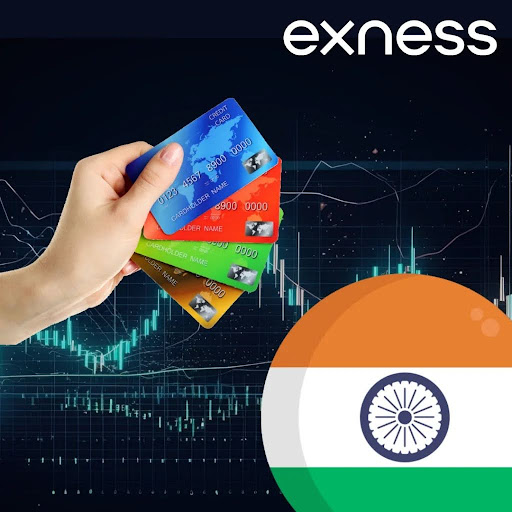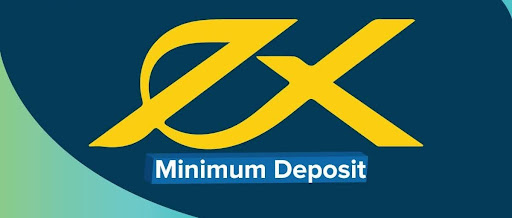
13 minute read
What Is the Minimum Deposit for Exness in INR?
Exness is a well-known global forex broker offering a wide range of trading services and account options to traders around the world. For Indian traders looking to enter the world of online trading, one of the first things to consider is the minimum deposit requirement. Understanding this requirement is crucial as it determines how much capital is needed to activate a trading account and begin trading on the platform.
This article specifically focuses on the minimum deposit for Exness in Indian Rupees (INR), which is an important factor for traders who prefer to manage their funds in their local currency. Knowing the minimum deposit requirement for Exness in INR can help Indian traders plan their trading strategy effectively, avoid unnecessary currency conversion fees, and start their trading journey with ease.


Understanding Minimum Deposit
In the world of online trading, a minimum deposit refers to the smallest amount of money that a trader needs to deposit into their trading account in order to start trading. This deposit is essential for activating the account and is often required before you can begin executing trades. The minimum deposit is an important consideration for traders because it can vary significantly depending on the broker, account type, and sometimes even the currency used for deposits.
For Exness, the minimum deposit plays a key role in determining which account types are available to traders. It serves as an entry point for those who wish to begin trading with Exness, ensuring that traders have sufficient funds to manage their positions and risk levels in the forex market.
Why Minimum Deposit Matters:
Account Activation: To open a live trading account, you need to make a deposit. Without meeting the minimum deposit requirement, your account will remain inactive, and you won’t be able to trade.
Leverage and Risk Management: The minimum deposit ensures that traders have enough funds to manage their positions effectively. This is especially important for leveraging trades and minimizing risk exposure.
Variety of Account Types: Brokers like Exness offer different types of accounts, and each account type may have its own minimum deposit requirement. The type of account you choose can affect the features and benefits available to you, such as spread types, trading conditions, and leverage options.
Capital Flexibility: A lower minimum deposit allows traders with smaller budgets to start trading. Exness offers flexible deposit requirements across various account types, making it easier for traders with different capital levels to participate.

Understanding Minimum Deposit
Start Trading: Open Exness Account or Visit Website
Exness Minimum Deposit Requirement for INR
For Indian traders, the minimum deposit for Exness in INR is designed to be accessible, catering to a wide range of traders, from beginners to more experienced professionals. Exness offers a variety of account types, and each comes with its own deposit requirement. These minimum deposits are set to ensure that traders have enough capital to start trading while maintaining flexibility in how they approach the forex market.
The Standard Account at Exness is perfect for new traders or those who want to start small. With a minimum deposit of just ₹1,000 INR, it provides an affordable way to enter the market. This account type offers flexibility, allowing traders to access various financial instruments such as forex pairs, indices, and commodities. The Standard Account also provides moderate leverage, which is ideal for beginners to manage their risk and positions without committing large amounts of capital upfront.
For more experienced traders, Exness offers the Pro Account, which comes with a minimum deposit requirement of ₹10,000 INR. This account type is designed for traders who need tighter spreads and more advanced trading conditions. It is well-suited for those who are looking to trade with more significant volumes and require more control over their trades. The Pro Account also offers higher leverage, making it a popular choice for active traders who prefer to maximize their potential profits with greater risk exposure.
Another option for Indian traders is the Zero Account, which also requires a minimum deposit of ₹10,000 INR. This account is tailored for traders who want to trade with zero spread on major currency pairs. While the deposit requirement is the same as the Pro Account, the key difference lies in the pricing structure, which offers better cost efficiency for frequent traders. The Zero Account is best suited for those who prioritize low trading costs over other features.

How to Deposit Funds into Exness Account in INR
Depositing funds into your Exness account in Indian Rupees (INR) is a simple process, and Exness offers a variety of convenient methods for traders to fund their accounts. Whether you're new to trading or a seasoned professional, Exness provides a smooth and secure way to deposit funds in INR, ensuring that you can quickly get started with your trading activities. Below is a step-by-step guide on how to deposit funds into your Exness account.
1. Log Into Your Exness Account
Start by logging into your Exness Personal Area. This is where you manage your account and perform various actions, including deposits and withdrawals.
If you don't already have an account, you'll need to create one by providing your personal details and completing the necessary verification process.
2. Navigate to the Deposit Section
Once logged in, look for the "Deposit" section in your Exness Personal Area.
Click on this section, and you'll be presented with a list of available deposit methods. Exness supports a wide range of payment options, including bank transfers, e-wallets, and payment cards.
3. Select INR as the Deposit Currency
Exness allows you to deposit in multiple currencies, but for Indian traders, it’s important to choose INR as your deposit currency. This ensures that you are not charged conversion fees, and your deposit is directly credited in Indian Rupees.
Ensure that your account is set to deposit in INR, which is usually automatically detected based on your location.
4. Choose a Payment Method
Exness offers several deposit methods that support INR. Some of the most common options include:
Bank Transfer (Domestic): Many Indian traders prefer transferring funds directly from their local bank accounts. You can use methods like IMPS, NEFT, or RTGS. The process typically involves logging into your banking portal and making a transfer to the account details provided by Exness.
UPI (Unified Payments Interface): Exness also supports UPI, which is a popular payment method in India for quick and easy transactions. UPI allows you to deposit funds directly from your mobile banking app by scanning a QR code or entering payment details.
E-wallets (Skrill, Neteller, etc.): If you prefer digital wallets, you can choose from various e-wallets that support INR. These options are fast and convenient, making them ideal for traders who want to quickly fund their accounts.
Debit/Credit Card: Exness also accepts deposits through international and domestic debit or credit cards, including Visa and Mastercard. This method is instant, but you may be subject to small fees from your card issuer.
5. Enter the Deposit Amount
After selecting your preferred payment method, you will be prompted to enter the amount you wish to deposit into your Exness account. Make sure the amount meets the minimum deposit requirement for your chosen account type (e.g., ₹1,000 INR for a Standard Account).
Exness allows deposits to be made in increments, so you can deposit more than the minimum requirement if desired.
6. Complete the Payment
Depending on the payment method selected, follow the on-screen instructions to complete the transaction. For bank transfers, this may involve using your bank's mobile app or online portal to approve the transfer. For e-wallets and cards, the process usually involves entering your card details or e-wallet credentials.
In the case of UPI payments, you’ll be asked to authorize the payment through your mobile banking app.
7. Confirmation and Processing
Once the payment is processed, you’ll receive a confirmation on the Exness platform. Deposits made through methods like UPI and cards are typically credited instantly, while bank transfers may take a little longer to process, depending on the method and time of day.
You’ll be notified when the funds have been successfully credited to your Exness account.
8. Start Trading
Once the deposit is confirmed and available in your Exness account, you can start trading. The funds will be available for use in your trading positions, and you can use them to open trades, invest in forex pairs, commodities, and more.

Start Trading: Open Exness Account or Visit Website
Advantages of Trading with Exness in INR
Trading with Exness in Indian Rupees (INR) offers several key advantages for Indian traders, making the platform an attractive choice for those looking to enter the world of online forex and financial trading. By allowing deposits, withdrawals, and trading in INR, Exness simplifies the process and removes many of the complexities often associated with currency conversion. Here are some of the primary benefits of trading with Exness in INR:
Elimination of Currency Conversion Fees
One of the most significant advantages of trading with Exness in INR is the avoidance of currency conversion fees. Many brokers require traders to deposit funds in foreign currencies, such as USD or EUR, and then convert the funds to the trading currency. This often involves additional charges and unfavorable exchange rates, which can eat into profits. However, by depositing and trading directly in INR, Exness eliminates the need for these conversions, saving you money in fees and offering a more transparent trading experience.
Easier Fund Transfers
For Indian traders, depositing funds in INR simplifies the deposit process by avoiding the complexities of currency exchanges. Exness offers several payment options that support INR deposits, including UPI, bank transfers, and e-wallets. These local payment methods are more familiar and convenient for Indian traders, allowing them to transfer funds quickly and securely without the hassle of dealing with international payment systems. The use of domestic payment gateways also ensures faster transaction processing times.
Lower Transaction Costs
Using INR directly can help reduce the costs associated with international transactions. When traders are required to convert their funds to a foreign currency, they often face additional fees imposed by their bank or payment provider, as well as unfavorable exchange rates. By depositing funds in INR, you avoid these hidden costs, leading to a more cost-effective trading experience. Furthermore, Exness offers low or zero deposit fees, which further enhances the affordability of trading in INR.
Familiarity with Local Currency
Trading in INR provides a sense of familiarity and comfort for Indian traders. As an Indian trader, managing your funds in your local currency means you don’t have to worry about fluctuations in the exchange rates or the impact that currency market movements might have on your capital. This can provide a clearer perspective on your account balance and minimize the confusion that often arises from managing multiple currencies. For those new to trading, it’s much easier to relate to a familiar currency like INR.
No Need for Currency Conversion at Withdrawal
Another key benefit is that when you withdraw your profits, you can receive them in INR without worrying about converting them back to your local currency. Many brokers require traders to make withdrawals in a foreign currency, and the conversion back to INR can be costly. By trading in INR, Exness ensures that both deposits and withdrawals are handled in the local currency, providing greater convenience and reducing the potential for additional fees or exchange rate losses when cashing out your profits.
Lower Entry Barriers for Indian Traders
Exness's support for INR deposits, starting with a low minimum deposit of ₹1,000 INR, allows Indian traders to enter the forex market with minimal capital. This accessibility encourages beginners to start trading without the need to commit large amounts of money. Moreover, Indian traders who may be hesitant to invest in foreign currencies can do so with confidence, knowing that they don’t have to deal with currency conversion complexities or extra charges.

Start Trading: Open Exness Account or Visit Website
Conclusion
Exness provides Indian traders with a straightforward and cost-effective trading experience by allowing deposits, withdrawals, and trading in Indian Rupees (INR). By eliminating currency conversion fees and offering local payment methods such as UPI, bank transfers, and e-wallets, Exness ensures that traders can easily manage their funds without unnecessary costs or complications. Whether you are just starting your trading journey or are an experienced trader, the ability to deposit and trade in INR simplifies the process, reduces transaction costs, and gives you greater control over your investments.
The low minimum deposit requirements, combined with access to various account types and favorable trading conditions, make Exness an attractive choice for Indian traders. Furthermore, the availability of local customer support provides additional peace of mind, ensuring that you can resolve any issues in your local time zone and language.
FAQs
What is the lowest deposit you can make with Exness in INR?
The minimum deposit requirement for Exness in INR is as low as ₹1,000 INR for the Standard Account. This allows new traders to start with a small investment and gradually increase their trading capital as they gain more experience.
Can I deposit INR via a local bank transfer?
Yes, Exness supports local bank transfers for deposits in INR. You can use payment methods like IMPS, NEFT, or RTGS to transfer funds directly from your Indian bank account to your Exness account.
Are there any hidden fees for depositing in INR?
Exness does not charge deposit fees for most payment methods. However, you may want to check with your bank or payment provider to ensure that there are no charges associated with your chosen payment method.
Is it possible to withdraw funds in INR?
Yes, Exness allows you to withdraw funds in Indian Rupees (INR), which is especially convenient for Indian traders who prefer to receive their profits in their local currency. The withdrawal process is simple and efficient, with various methods available for Indian traders.
Can I use UPI to deposit funds into my Exness account in INR?
Yes, Exness supports UPI (Unified Payments Interface) for deposits in INR. This allows for quick and easy transactions directly from your mobile banking app, making it one of the most popular methods for Indian traders to fund their accounts.
What payment methods can I use to deposit in INR with Exness?
Exness offers several payment methods for deposits in INR, including bank transfers (IMPS, NEFT, RTGS), UPI, e-wallets (Skrill, Neteller), and debit/credit cards. You can choose the method that suits you best based on speed, convenience, and fees.
Can I trade with Exness in INR if my account is in a different currency?
While Exness supports INR deposits and trading in INR, your trading account currency is typically set when you open your account. If your account is in a different currency, you may need to convert your funds when depositing.










